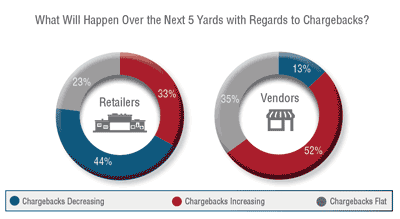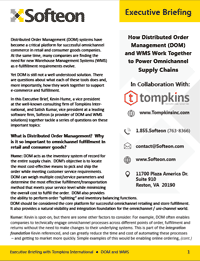The Greatest Time to be a Supply Chain Pro Ever?
We're in what I guess some still call the dog days of August, though that term seems a bit dated. Summer is winding down, the unofficial end of summer, Labor Day, is right around the corner, kids of all ages are heading back to school if not already there, and high school football games ready for kick-off.
So in this interregnum, I started musing the other day on this: is right now, here in the second half of 2017, the best time ever to be a supply chain professional?
I say Yes - and below I make my case.
| SHERMAN SAYS: |
It is not good to have some supply chain managers focused on all this innovation and cool stuff while others are stuck with grinding out the execution every day.
WHAT DO YOU SAY?
Send us your
Feedback here
|
Let's note that in general, supply chain has been a solid career choice since the supply chain era really started in the late 1980s, though of course there have naturally been some ups and downs. But in less than three decades, a new, highly important business function has been created, and that alone is worth some self-congratulations.
But beyond all that, consider the specific of the times in supply chain right now.
First, in many respects this new normal of slow but modest growth in the economy is maybe a very good thing. We know the bad times of recessionary periods, most recently and painfully in 2008-09, when supply chain is focused on extreme cost cutting, facility consolidation, beating up suppliers on prices, etc., etc.
Not good times.
I will note that many - including me - have at times lamented this new economic normal, where we haven't seen real GDP growth of 3% amazingly since 2005. The slow growth has an impact on failing to close the federal debt, lack of funds for infrastructure spending and more.
But you know, there is something to be said about slow but steady winning the race. Unemployment is at its lowest levels in the US in some time. The overall economy has been very predictable since 2009, with enough growth for most that the sort of normal, continuous improvement type of supply chain cost reduction are sufficient. And non-economist that I am, I still have to wonder whether the modest growth is what has led to eight years of positive GDP without a recession. I'll take it.
And in this stable economic environment, times have simply never been better for supply chain professionals of all levels, from executive to college grad. For the latter, just a couple of years ago, graduates of MIT's master's degree in supply chain were getting jobs with salaries of something like $110,000 per year with an average $17,000 bonus. Not bad. I assume the numbers have gone at least a bit north since then.
At a recent supply chain conference at the University of Tennessee, the head of supply chain for medical devices maker, Stryker, implored students in attendance to send resumes to the company, because Michigan-based Stryker - a great company - was having a very hard time filling all its supply chain openings.
"For every graduate with supply chain skills there are six holes to be filled, and it could be as high as nine to one in the future," recently said former Procter & Gamble supply chain exec Jake Barr, now of BlueWorld Supply Chain Consulting.
Report after report says the demand for supply chain talent far exceeds the supply - great news for those in the discipline already. I have spoken with a number of large companies who said in effect if we don't want to develop talent, we want to hire it. A supply chain executive recruiter recently told me business is booming.
So I hope we can all agree that from a pure job security/wages/opportunities perspective, this is about as good as we have seen it - even if artificial intelligence takes half the jobs 20 years from now.
But it's hardly just that aspect of a supply chain career that makes this the greatest time ever for supply chain managers.
Just as important is this: as I have written before, supply chain pros right now are operating in a period of unprecedented innovation. It varies by company for sure, and indeed Amazon is responsible for much of this thinking, but hardly all. Back to that in a second.
It wasn't that many years ago, for example, that there was an active debate about whether logistics - and even broader supply chain processes - were really just commodity functions, making them especially ripe for outsourcing.
There is still a lot of that thinking out there, and maybe even in some companies/sectors justified, but I would argue we are close to an all-time high mark in terms of viewing supply chain as a source of innovation and differentiation. And as I have written before and will write about again soon, there are really two forms of such innovation: (1) innovation in supply chain processes themselves, to better serve customers and/or reduce costs; and (2) innovation in supply chain needed to support innovation in the new products and services the business wants to take to market.
On the latter form of innovation, Pepsico's John Phillips has been brilliantly articulating on the speaker front over the last few years the need to marry the digital side of the business with the physical supply chain side. Sounds like fun to me.
It's a bit of a chicken-and-egg scenario, in that I am not sure how much the need to innovate drove new technology creation or new technology is driving process innovation, but consider the list of pretty new tools supply chain professionals have to work with today, even if some of the thinking must be done in advance of full commercial availability:
 • Drones • Drones
• Robots of literally every sort
• Internet of Things/sensors
• Autonomous cars, trucks, and ships
• New advanced analytics
• 3D printers
• Augmented/virtual reality
• Cloud computing/mobile apps
That is one heck of a list, and I am sure I'm leaving a few things off. And in 2004, we were pinning most of our hopes for advancement solely on RFID.
And that list is hardly complete for just Amazon and a handful of extremely large companies. Examples:
Scandinavian chemicals company Yara is launching next year what appears to be the first commercial autonomous container ship, though it will start with human-assisted freight movement from a plant to a port location before going fully autonomous in 2020. The all-electric powered ship will eliminate some 40,000 truck trips per year needed to move the same freight.
Contract manufacturers Flextronics recently deployed a visibility wall, a huge collection of integrated flat panel displays providing real-time information on supply chain processes - a dashboard on steroids - allowing managers to touch the screen to drill down on details.
A retailer in Minnesota was delivering cases of beer to ice fisherman and a Michigan florist flowers to customers via drones a few years ago before the FAA shut them down.
To all of the above, you can add the myriad opportunities to improve sustainability, in its many dimensions, a new aspect to the already essential role supply chain plays in making the world a better place, with plenty of opportunities for creative thinking.
Amazon, of course, is an innovation machine unlike any other in supply chain history, filing supply chain related patents left and right and announcing product/service innovations at about the same pace. That includes the recent news that Amazon is now offering a new "Instant PickUp" service in which orders for select high volume items will be picked and stored in secure lockers in just two minutes from the time of the on-line order. What's left, teleporting?
I don't how many of Amazon's more outlandish ideas (e.g., blimp warehouses served by drones for local delivery) will see the light of day, but I am certain there will be a trickledown effect in which successful Amazon innovations will find their way into numerous other companies over time, just as a few firms have finally started to knock-off the Kiva Robotics system Amazon acquired in 2012.
There is one caveat here, which is that as Gartner discussed at its conference last year, it is not good to have some supply chain managers focused on all this innovation and cool stuff while others are stuck with grinding out the execution every day, and that's where I think some kind of rotation program needs to be put in place at large companies.
So here it is: a favorable, predictable economic climate for most; high demand for new and experienced supply chain professionals that far exceeds supply; a strong focus on supply chain innovation along several dimensions; an unprecedented array of new, emerging and often cool technologies to consider and test; and numerous opportunities to improve sustainability and the world.
That all adds up to what I believe is the greatest time to be part of the supply chain that we've seen. Enjoy it while you can, because it won't last forever.
Are these the best times ever for supply chain professionals? Why or why not? Let us know your thoughts at the Feedback button below. |



![]()

![]()

![]()










